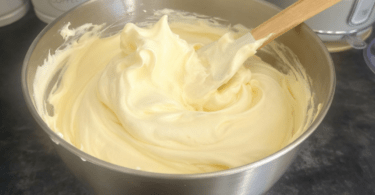Keeping an eye out for cracks in walls is critical.
Covering a cracked wall should precede an assessment of the danger of the hole. Hiding the latter is not enough because repairing it without analysing the underlying reasons is a ticking time bomb. And for good reason, even small visible cracks can be the result of a serious cause, even if they are repaired. When these exceed 0.2 millimetres, they have the potential to become cracks. In this case, it will be necessary to anticipate this by seeking advice and repairs from a building professional. And for good reason, these large cracks can lead to the collapse of the substrate. Sometimes it is mould that damages them. Fortunately, it is possible to get rid of it with various techniques.
How are cracks in ceilings and walls assessed?
During a specialist’s intervention, he starts by analysing the severity of the cracks in the ceiling or wall. He will use tools such as a plaster mount to measure the depth of the hole. He can also analyse the latter with a graduated crack gauge to measure the width of this crack. The building professional can also use a sample cup for the same purpose. It is thanks to these devices that the expert will be able to know whether repair work will be required.
How to fill a plaster wall?
Generally, walls with this material are located inside the house. The cracks that can damage them are usually superficial. Fortunately, cracking can be stopped with DIY skills and the right tools. You will need a paintbrush, a scraper, a putty knife, sandpaper and a putty cartridge. The first step is to widen the hole with the scraper. Then use the brush to clean out the plaster residue and sand the sides with the inside of the crack. It is now time to use the putty to fill the latter and wait for it to dry. Use sandpaper to smooth the wall or ceiling. For a more aesthetic appearance, it should be repainted in white or in the colour of your choice. Magic, isn’t it?
My wall is concrete: how do I fix it?
This more fragile wall material requires more extensive repair work. If the crack is superficial and shallow, you can plug the hole in the wall by equipping yourself with the essential tools for this action. Filler, which you can easily find in DIY shops, can seal the gap and make it disappear if the width is not too wide. The smoothing or finishing coat smoothes the wall before painting or wallpapering it. To make it easier, you can use a spatula. It is important to respect the drying time indicated on the packaging.
What types of coating are available?
There are several types of coatings available on the market to effectively seal a crack in a wall. When a wall starts to crack, you can choose either powder or paste. The former is suitable for larger cracks, while the latter has the advantage of a longer shelf life and is ready to use. On the other hand, it acts against surface cracks sporadically. If you have a powder coating, read the packaging carefully to find out how much water to mix this DIY product with. It will then need to be poured into a medium bowl so that it can be mixed. The preparation should be smooth and homogeneous. The final touch is to work the spatula into this liquid and seal the crack. Remove the excess with the tool and just let it dry. When your coating is ready to use, it will be easier to repair the crack opening. Whether vertical or horizontal, these holes should be filled with the coating that requires no prior preparation. Apply this clay product on a spatula and spread it over a surface that overlaps the cracks. Make sure that the liquid fills the latter by passing the tool over it several times. When dry, it will be necessary to sand to remove the residue and allow time for the paste to dry. After these actions, the wall will be sealed again and the potential damage of the small crack will be eliminated!
How to finish after filling?
The final touch is to lightly sand the area with fine sandpaper. If the wall is uneven, it will be necessary to apply a specific filler to smooth the substrate. This liquid applied after the first coat will help you to paint the surface better. Let it dry for a few hours.
How do you fill a crack in an exterior block or brick wall?
Unlike other materials, an exterior wall made of concrete block or brick that has cracks requires caution. And for good reason, it can quickly cause damage to the house. That is why before carrying out any work yourself, it will be necessary to consult a building specialist. This expert will be able to make a diagnosis of the façade in order to assess the masonry of the house. If it is important to call in a professional, it is because a repair on bricks or cement blocks requires know-how that is not within the reach of DIY enthusiasts and because it can damage the walls. Cracks in these can be caused by damp. There are techniques to prevent this permanently.







